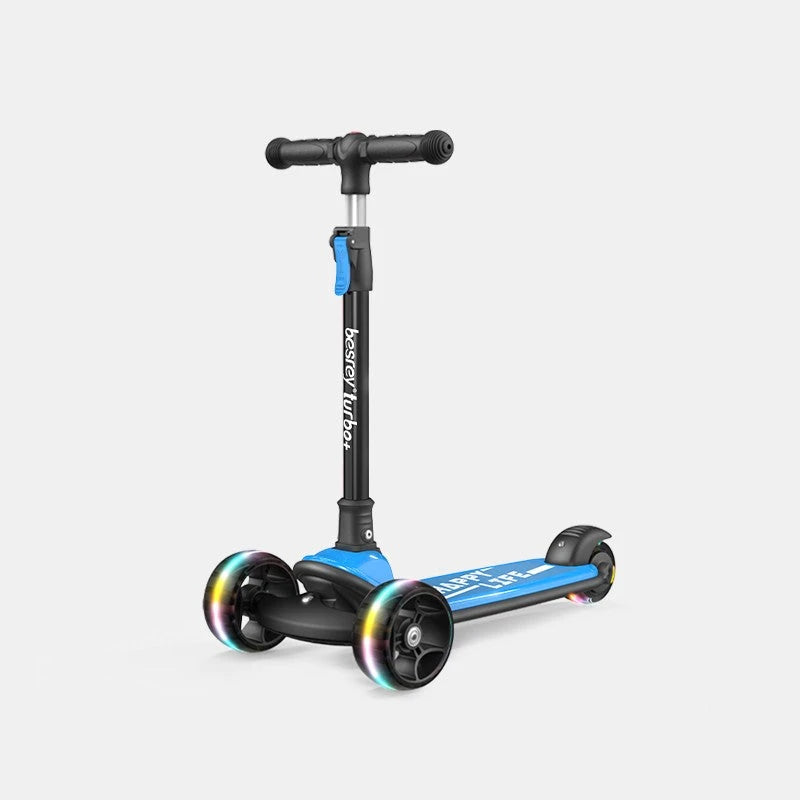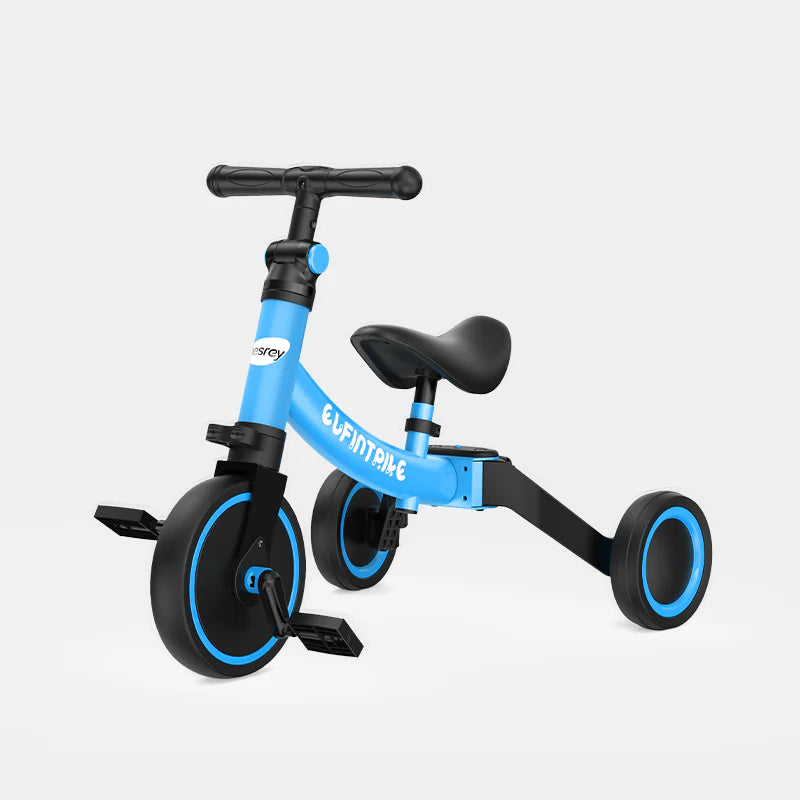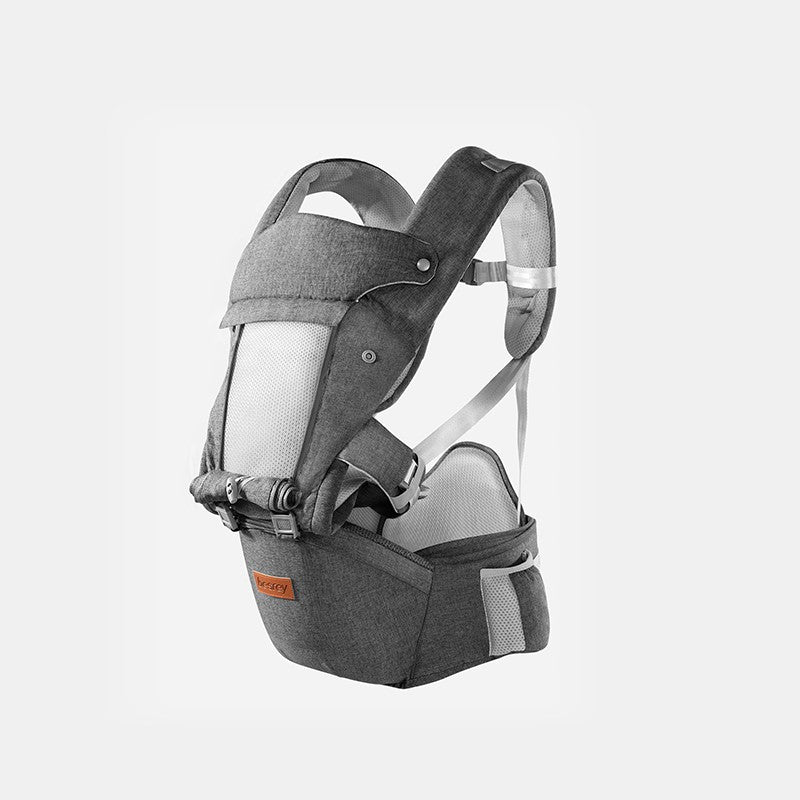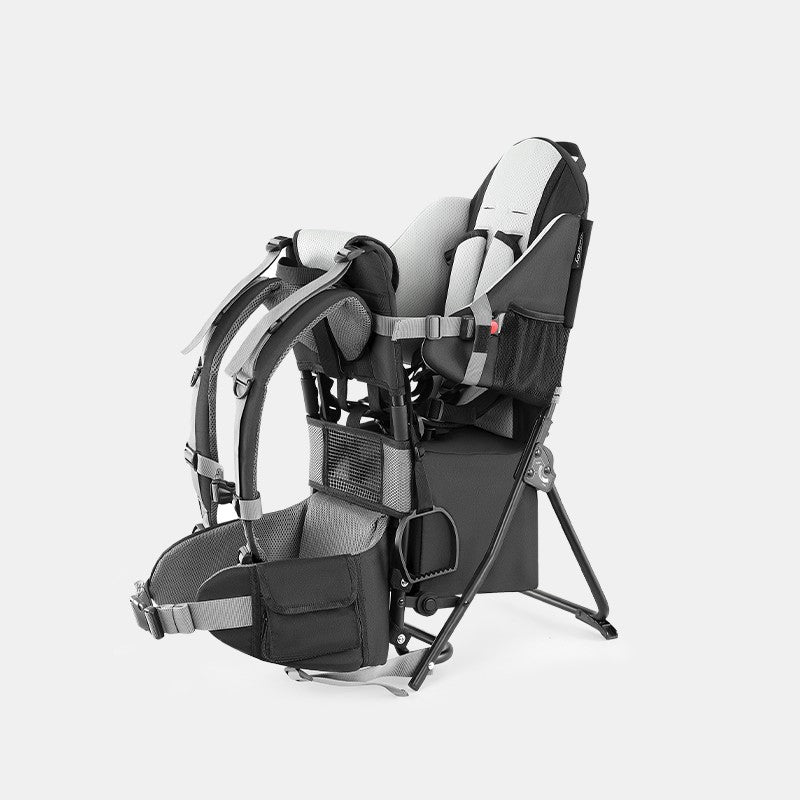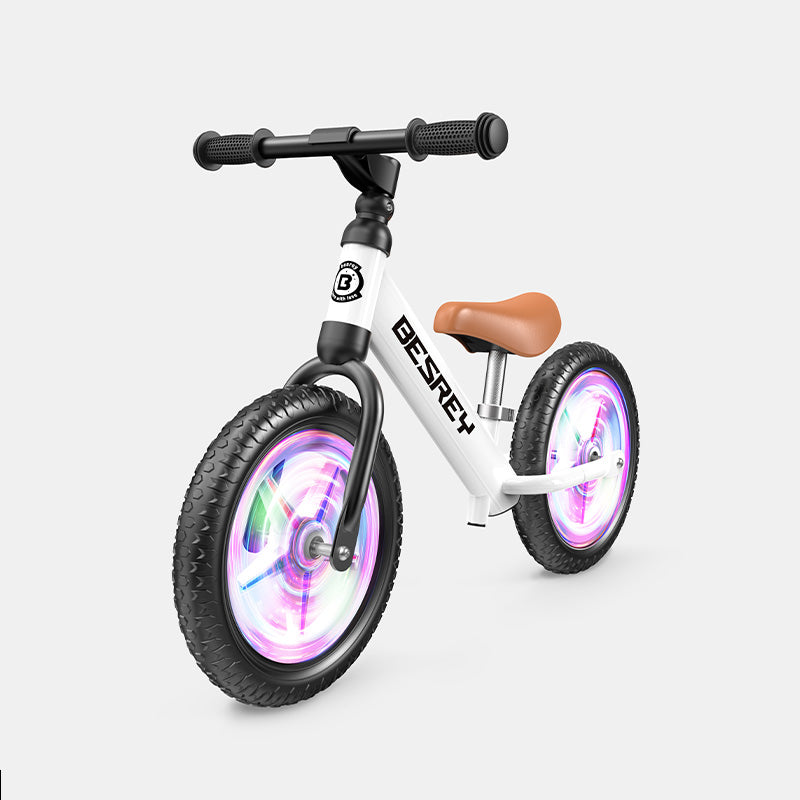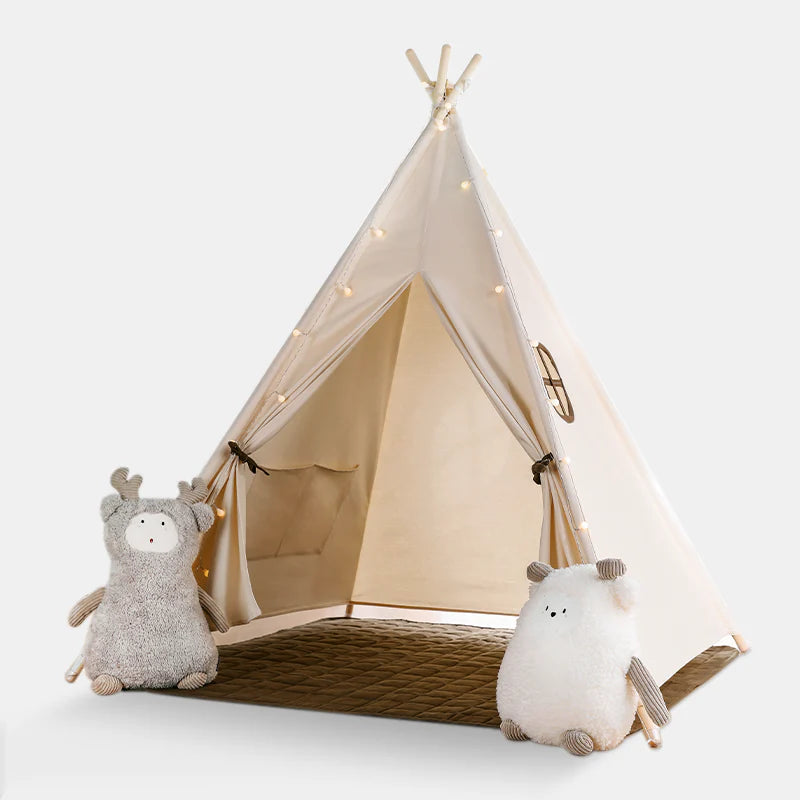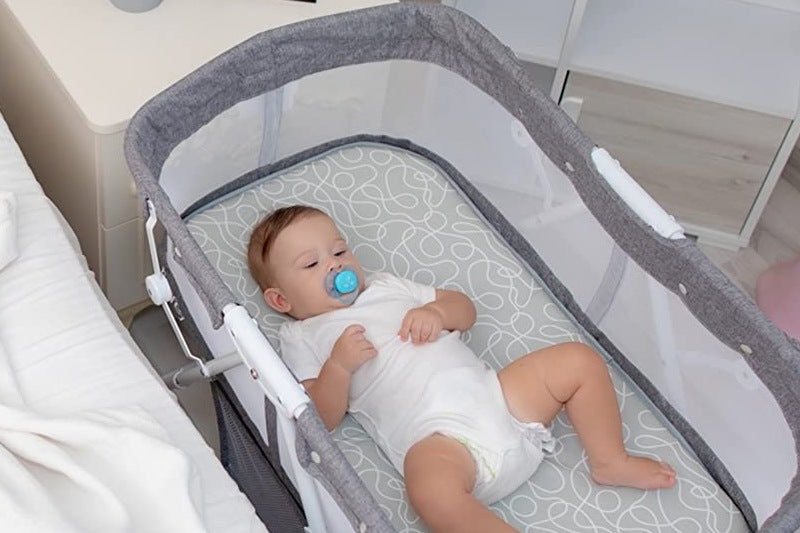
Bassinet Vs Crib: diferencias y ¿cuál es mejor para un bebé?
When the baby is born, he should be given a comfortable and independent sleeping space, as a good night's sleep will aid his growth and development. There are two main types of baby sleep products on the market: bassinets and cribs. However, many parents are unsure which to choose due to some very similar characteristics. Today, we utilize this article to explain the main differences between the two to assist new parents in making better decisions.
What is a Bassinet?
A baby bassinet is a "small bed designed primarily to provide sleeping accommodations for infants supported by freestanding legs, a stationary frame/stand, a wheeled base, or a rocking base, or that can swing relative to a stationary base," according to the CPCS. Of course, other multifunctional cradles that can be attached to a stroller or combined with a playpen are also available.
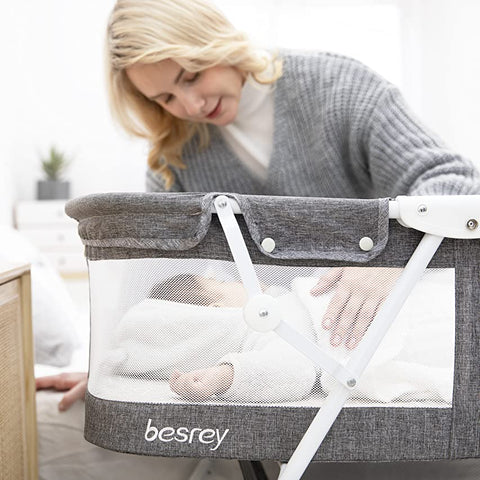
What is a Crib?
According to the CPCS, a bedside sleeper is a "bed designed to provide sleeping accommodations for an infant and is intended for use in the home, a child care facility, a family child care home, or places of public accommodation affecting commerce." Cribs are a relatively new development designed to confine a standing child; their cage-like design confines the child to the crib. Children between the ages of one and two can climb out of their cribs and are moved to a toddler bed to avoid a dangerous fall while attempting to escape.

Bassinet Vs. Crib: Pros and Cons
Both bassinets and cribs are designed to provide a safe sleeping environment for babies, but they each have their benefits and drawbacks in specific usage scenarios. Before you buy, you must decide which of the two products to buy based on your current needs and the functions of these two products.
Bassinet Pros
Perfect for Small Living Spaces
The bassinet has a smaller sleeping area than the crib, which can provide a stronger womb-like wrapping and allow a baby to adjust before sleeping alone in the crib or bed. Parallelly, a small sleeping area means a smaller size, which is especially important for families with limited bedroom space. The small size of the bassinet can save more valuable living space.
Better Portability
The bassinet is small in both size and weight. This can make moving the bassinet between rooms easier, especially if your baby is sleepy. Some bassinets can even be folded down to a smaller size to fit in your car or store in tighter spaces.
Less Expensive than Cribs
Generally speaking, a bassinet will be a little less expensive than a crib due to differences in size and functionality. But that doesn't mean there will be a worse experience than a crib, so it's a good choice for budget-conscious families.
Bassinet Cons
Weight Limit
Because bassinets are generally smaller than cribs, they use less material and can hold less weight than cribs. As a result, the load-bearing range of the bassinet will be much smaller than that of the crib, which means that once the baby gains weight, new sleeping products, such as cribs, bedside beds, and other products, will be required to adapt to the new sleeping needs of the baby's growth and development.
Not Cost-effective
Although a bassinet is less expensive than a crib, parents must spend money on new sleep products once their child reaches a certain age due to its smaller weight range. As a result, the bassinet is not very cost-effective in the long run.
Crib Pros
Larger Sleeping Area
Cribs are generally larger than bassinets, resulting in a larger sleeping area. A larger sleeping area can provide a more comfortable sleeping environment and give your child more space to move around as they grow in height and weight.
Used Longer
The crib has a larger sleeping area and higher guardrails, so when the baby tries to get up and even climb out of the bassinet, the crib can better limit the baby's movement to protect the baby's safety. This makes la cuna adecuada para recién nacidos y bebés mayores e incluso se puede utilizar durante años.
Desventajas de la cuna
Difícil de mover
Las cunas están hechas de más material para estabilizar la estructura general, aumentando el peso y dificultando el movimiento. Como resultado, la cuna generalmente se coloca en la esquina de una habitación o debajo de una pared. Cuando el bebé quiere dormir, los padres solo pueden llevarlo a la cuna.
Ocupa más espacio
Una cuna más grande ocupa más espacio habitable en la habitación. Si está considerando comprar una cuna, primero debe determinar si el tamaño de la cuna cabe en la habitación.
¿Cuáles son las diferencias entre moisés y cunas?
Como se indicó anteriormente, los moisés son más pequeños que las cunas; Los moisés están disponibles en modelos plegables, pero las cunas plegables son extremadamente raras en el mercado. Además, los moisés suelen tener un modo de moisés y un modo mecedor, lo que le permite usar el modo mecedor para calmar a su bebé antes de que se duerma. Por el contrario, las cunas normalmente se usan solo para dormir. Algunos moisés tienen ruedas que les permiten moverse de una habitación a otra, mientras que las cunas normalmente se fijan en una sola esquina de la habitación.
¿Cuál es mejor para tu bebé?
Si su bebé necesita relajarse un poco antes de dormirse, una cuna es una mejor opción; el modo de balanceo del moisés le ahorra trabajo y puede ayudar a su bebé a dormirse simplemente meciendo el moisés sin tener que cargar a su bebé. Una cuna es mejor si desea usar un producto para dormir para bebés por más tiempo; con un mayor rango de carga y un área para dormir más grande, la cuna se puede usar por más tiempo a medida que su hijo crece.
¿Cuál es más seguro?
El riesgo de vuelco u otros accidentes se reduce porque el moisés tiene un centro de gravedad más bajo y un rango de edad más joven. Si bien las cunas son generalmente más altas, es más probable que los niños en la cuna se pongan de pie o se muevan, lo que aumenta el riesgo de caídas cuando intentan salir de ella. Sin embargo, independientemente del producto utilizado, los padres deben seguir las instrucciones de seguridad del fabricante y mantener la vigilancia y el manejo suficientes para mantener seguros a sus hijos.
Una palabra de Besrey
Además de los moisés y las cunas, un nuevo producto para dormir para bebés que ha ganado popularidad recientemente son las cunas para dormir al lado de la cama. Permite que el bebé duerma contra la cama del adulto, lo cual es conveniente para que los padres cuiden al bebé.
Para facilitar la crianza de los hijos, Besrey ha lanzado su último modelo de cama junto a la cama con 9 alturas ajustables. Esta cama junto a la cama es adecuada para bebés de 0 a 6 meses y cuenta con un cómodo colchón con memoria 3D que protege la columna vertebral. Se puede ajustar de 30,91" a 39,37" para adaptarse a diferentes alturas de cama. Se puede mover fácilmente de una habitación a otra gracias a sus ruedas giratorias de 360 grados. Ahora está disponible a un precio favorable tanto en el sitio web oficial y Tienda de Amazon.

Compartir

